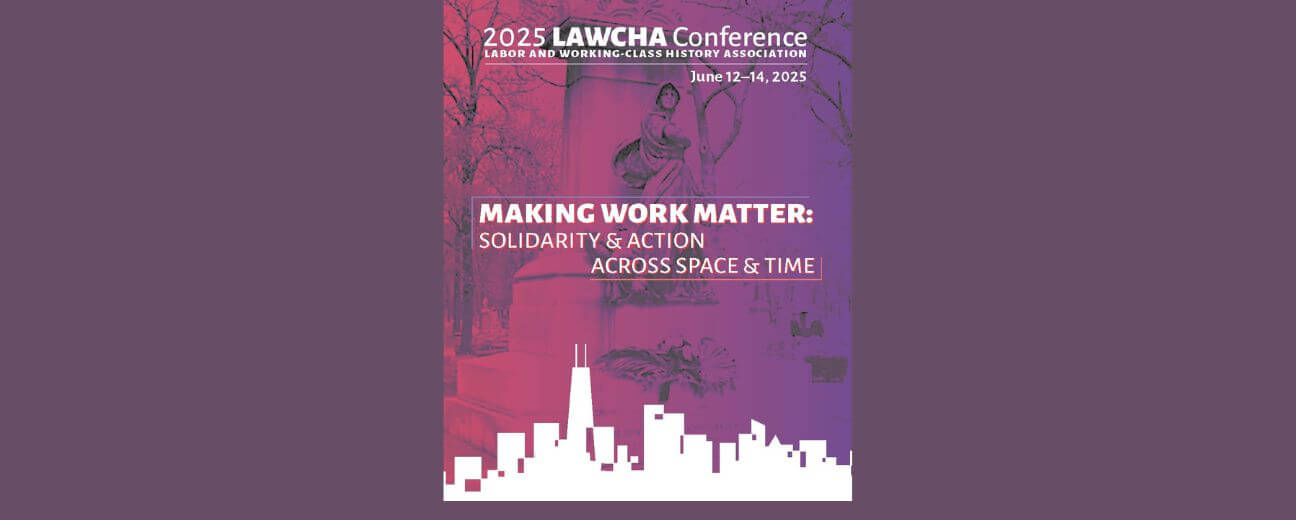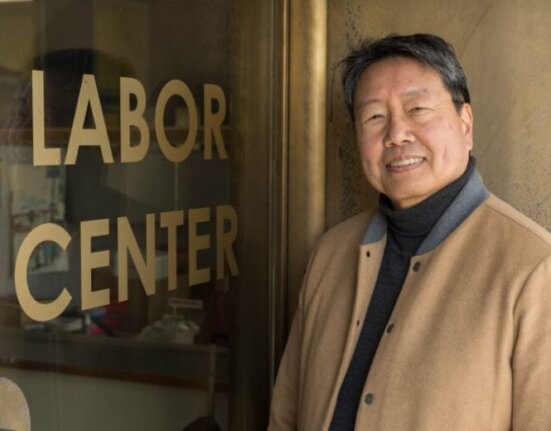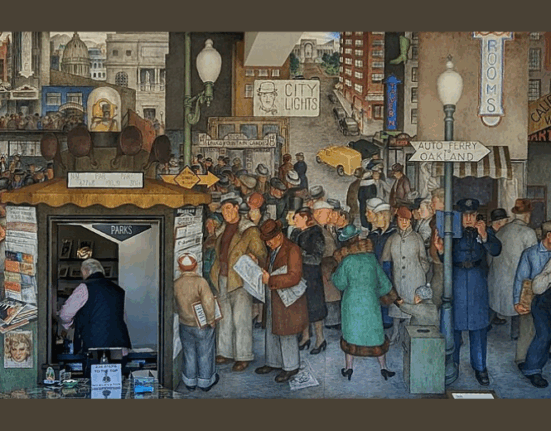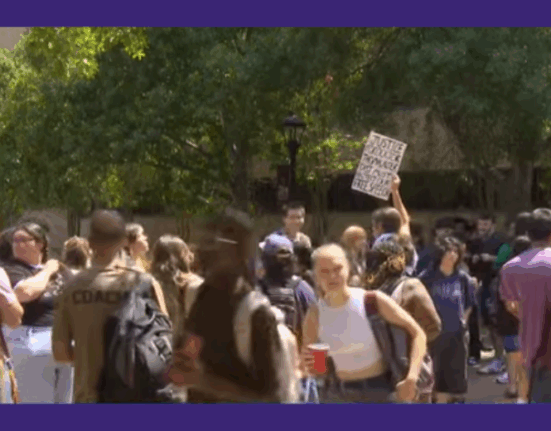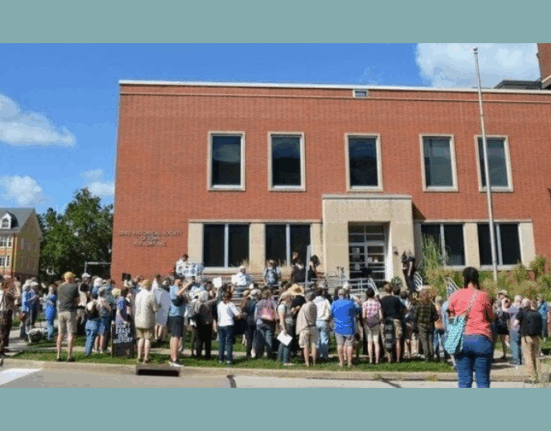We have a few brief summaries of panels and papers from the Labor and Working Class History Association conference, June 2025. If you have a comment or summary of a panel or event, send it on so it can be included.
I did something I haven’t done in years: I went to a panel for every session. Judging from how crowded the rooms are, others here are doing the same thing. (Some of that is that is the geography of the conference – that the “hanging out” area in Noyes Hall is a few blocks away from the classroom building where the panels take place – and a lot of it is that there are so many interesting panels to go to.) Rather than attempt to summarize all of them, I thought I instead just mention a few things that are sticking with me the next day.
First is importance of geography in many of the papers I heard on Friday. By this I mean both that the specific locations matter (at a panel on childcare, for instance, Justine Modica explained why and how New York was unusual both for its public provision of childcare and in its child care politics) and how work and industry reshape landscape and landscape shapes work. I started thinking about the topic in the morning, when Jesse Halvorsen, in a paper on the struggle over mechanization at West Coast ports, mentioned the space that container cranes required. The space their construction required forced dockside warehouses to be torn down. They were reconstructed, generally, away from ports, in inland locations on the urban fringe close to ground transportation. The moving and reconstruction of warehouses then led to the reorganization – and casualization – of warehouse labor.
Another example came in Andrew Seber’s paper on the human cost of biosecurity on giant hog farms in North Carolina. Seber’s paper was about how as hog farms grew to massive proportions, the biological risk to the animals increased, especially because they were genetically similar. Employers thus “inverted the hierarchy of species,” sacrificing the bodies and lives of human workers to keep the hogs safe (which is to say, healthy enough to kill). Biosecurity meant the control of space: control over where people went, and most of all the construction of “lagoons” (that is, enormous lakes of pig shit) which then polluted surrounding towns. In response, the neighboring towns became focal points of a burgeoning environmental justice movement, as neighbors sought to liberate their space from the meat companies.
A third example: early in Debbie Goldman’s presentation on customer service workers in the telephone industry, she showed two photographs. One, from the early 1970s, showed a worker at a desk, surrounded by paper files; the other, taken much more recently, showed a successor at a desk with a computer and monitor. In the first set-up, Goldman explained, workers were frequently getting up to find a file that was in a colleague’s workspace; this meant they would get up and stretch, talk to their colleagues, and build a community in the office. In the second set-up, the information the worker needs is always in her computer, so she doesn’t get up, she doesn’t have the chance to talk to colleagues, and her productivity can be constantly monitored by her bosses through electronic surveillance built into the software she uses for customers. The changed space of the office leads to a dramatically different experience fo work.
A second theme I’ve been mulling is workers’ bodies. In his introduction to a panel on the politics of occupational health, David Rosner read the first lines of Studs Turkel’s Working: “This book, being about work, is, by its very nature, about violence – to the spirit as well as to the body. It is about ulcers as well as accidents, about shouting matches as well as fistfights, about nervous breakdowns as well as kicking the dog around.” Rosner was introducing the paper I describe above by Andrew Seber and one about occupational safety campaigns by woman office workers to product against video display terminals (that is, computers) by Manzina Ahmed. Rosner’s point was that labor historians ought to think more about occupational safety and health, and Ahmed’s paper demonstrated why. For Ahmed, the fight to consider VDTs as health hazards was two-fold. First, it really was about preventing illness and injury, which is to say it was about office workers trying to protect their bodies from the ravages of work. But the fight was also for control over the workspace. By localizing workplace stress in a machine, the use of which could then be controlled and regulated, workers were arguing over how work should be structured, understood, and experienced.
Author
-

Jacob Remes is a historian of modern North America with a focus on urban disasters, working-class organizations, and migration. He is a founding co-editor of the Journal of Disaster Studies, the co-editor, with Andy Horowitz, of Critical Disaster Studies (University of Pennsylvania Press, 2021), and a series co-editor of the Penn Press book series Critical Studies of Risk and Disaster. His first book, Disaster Citizenship: Survivors, Solidarity, and Power in the Progressive Era (University of Illinois Press, 2016) examined the working class response to and experience of the Salem, Massachusetts, Fire of 1914 and the Halifax, Nova Scotia, Explosion of 1917. He has also written scholarly articles on a variety of other subjects ranging from interwar Social Catholicism to Indigenous land rights to transnational printers in the 19th century. His popular writing on subjects relating to his research has appeared in the Nation, Atlantic, Time, Salon, and elsewhere. Before coming to Gallatin,

